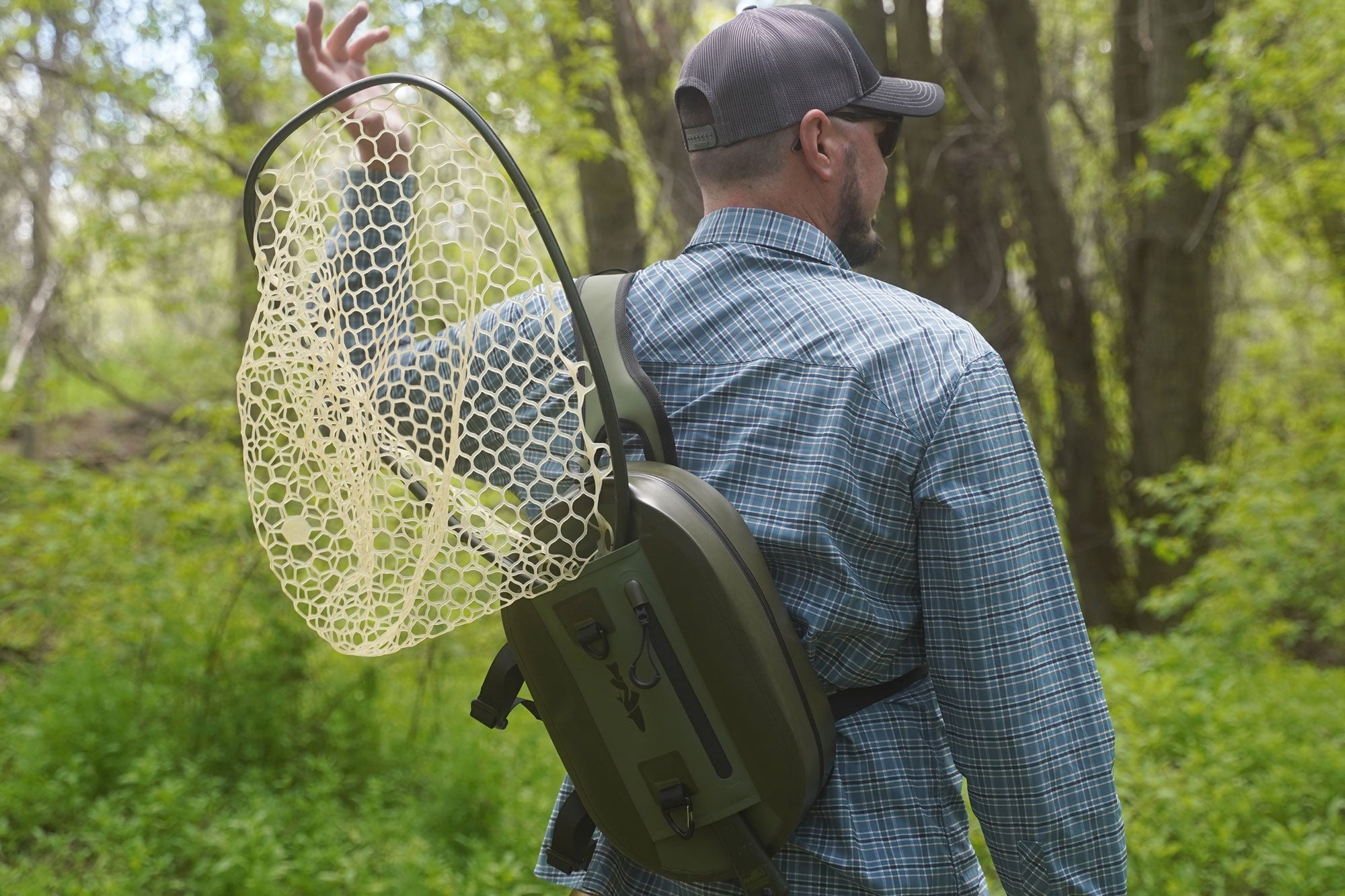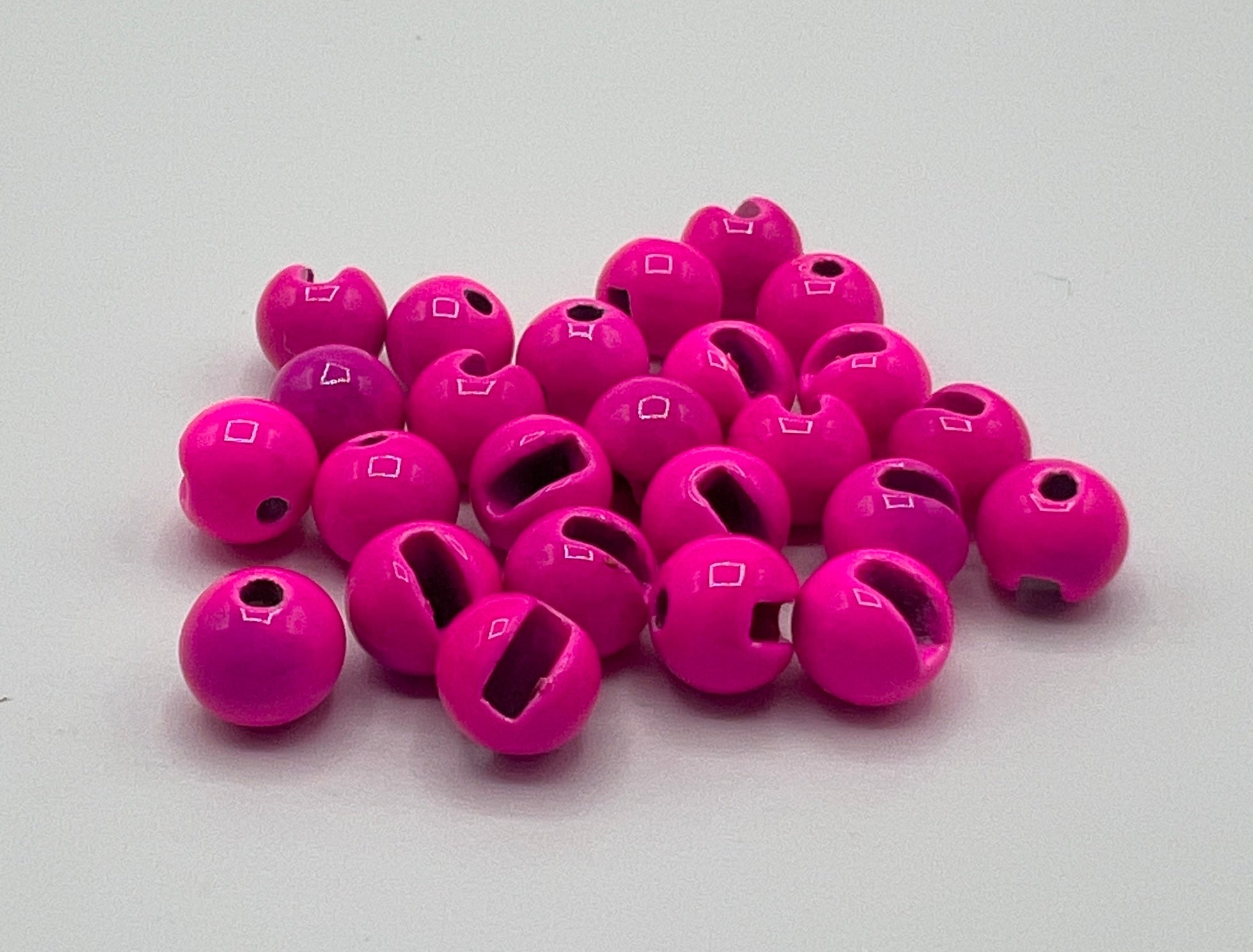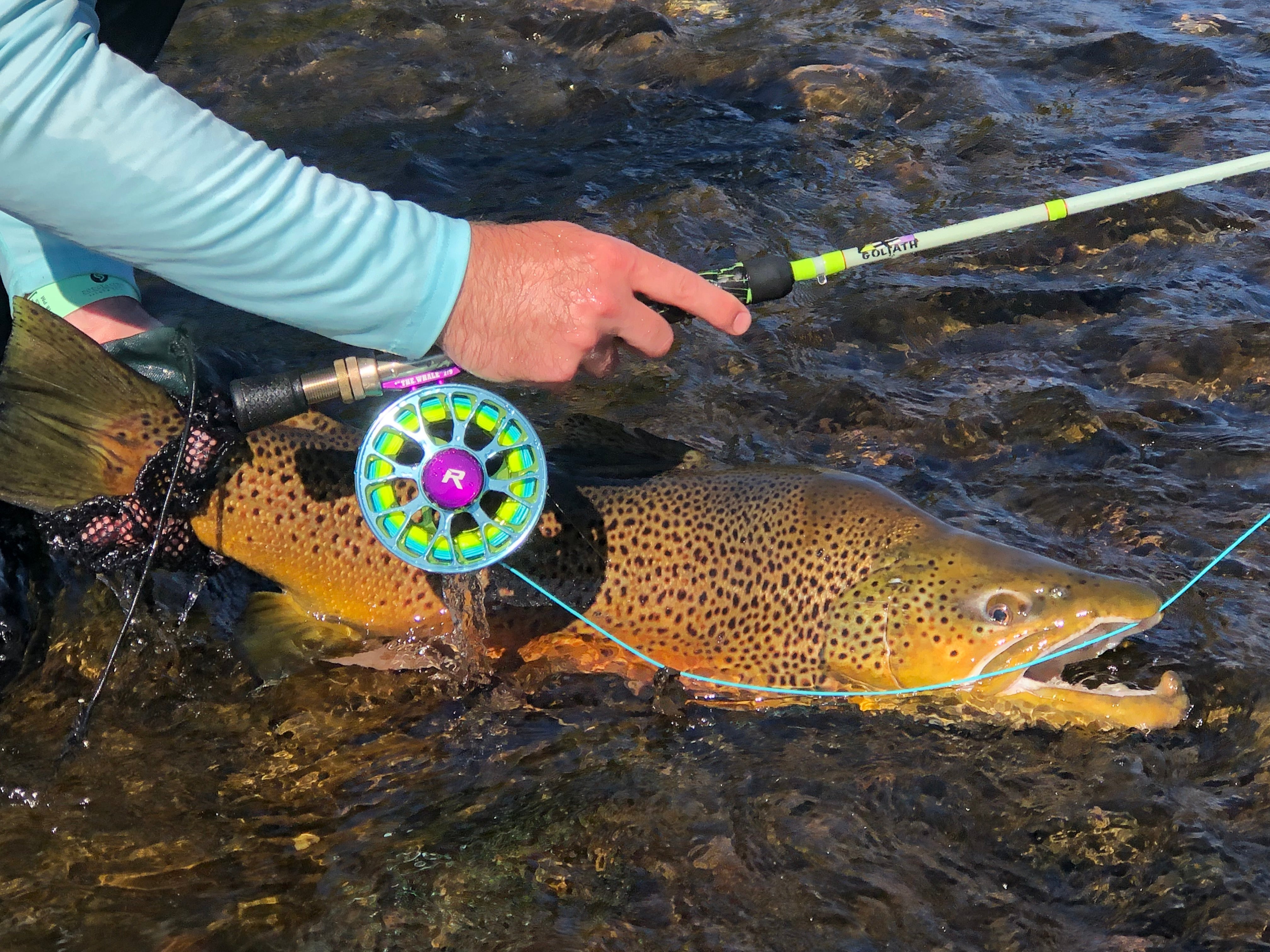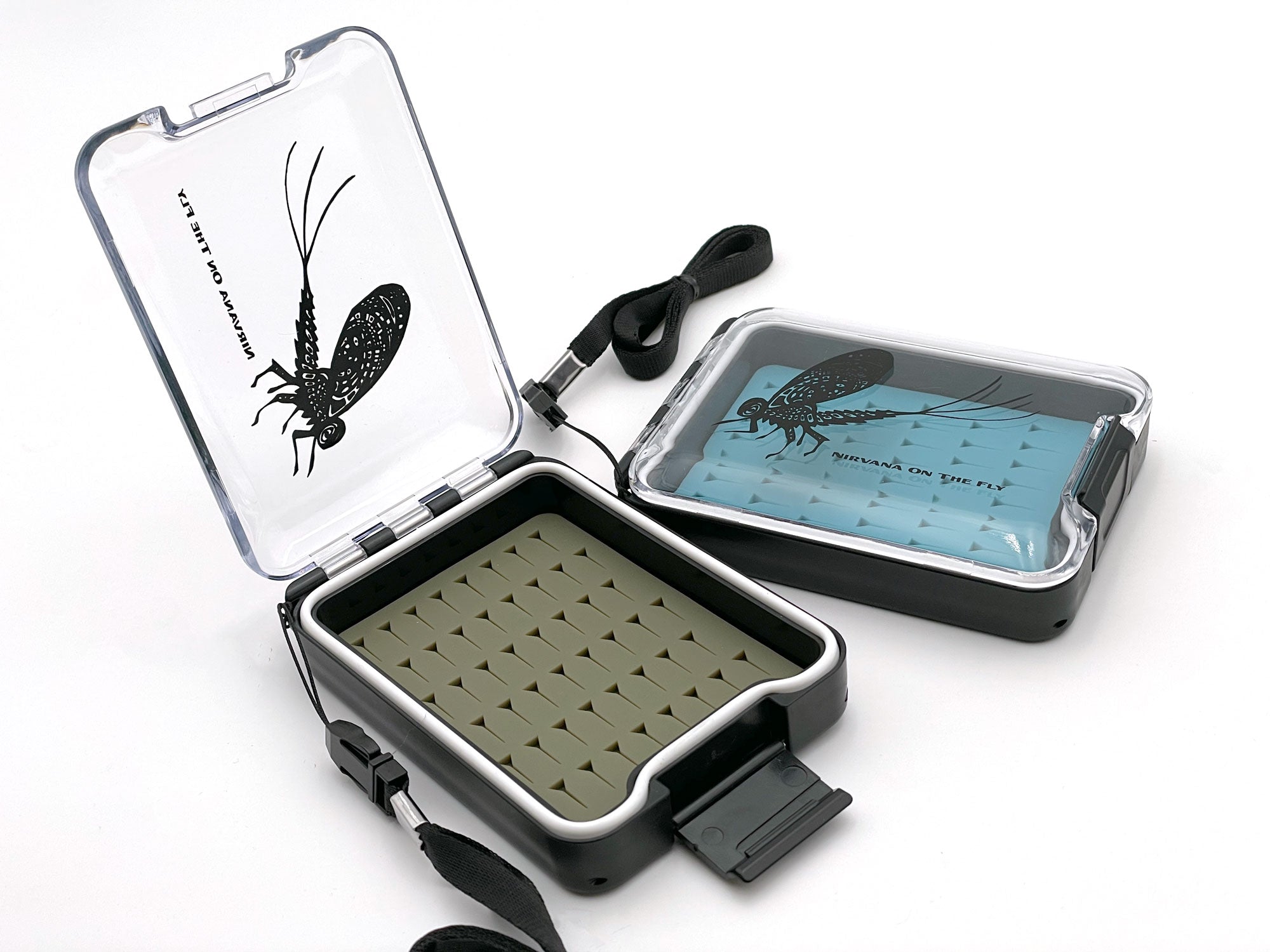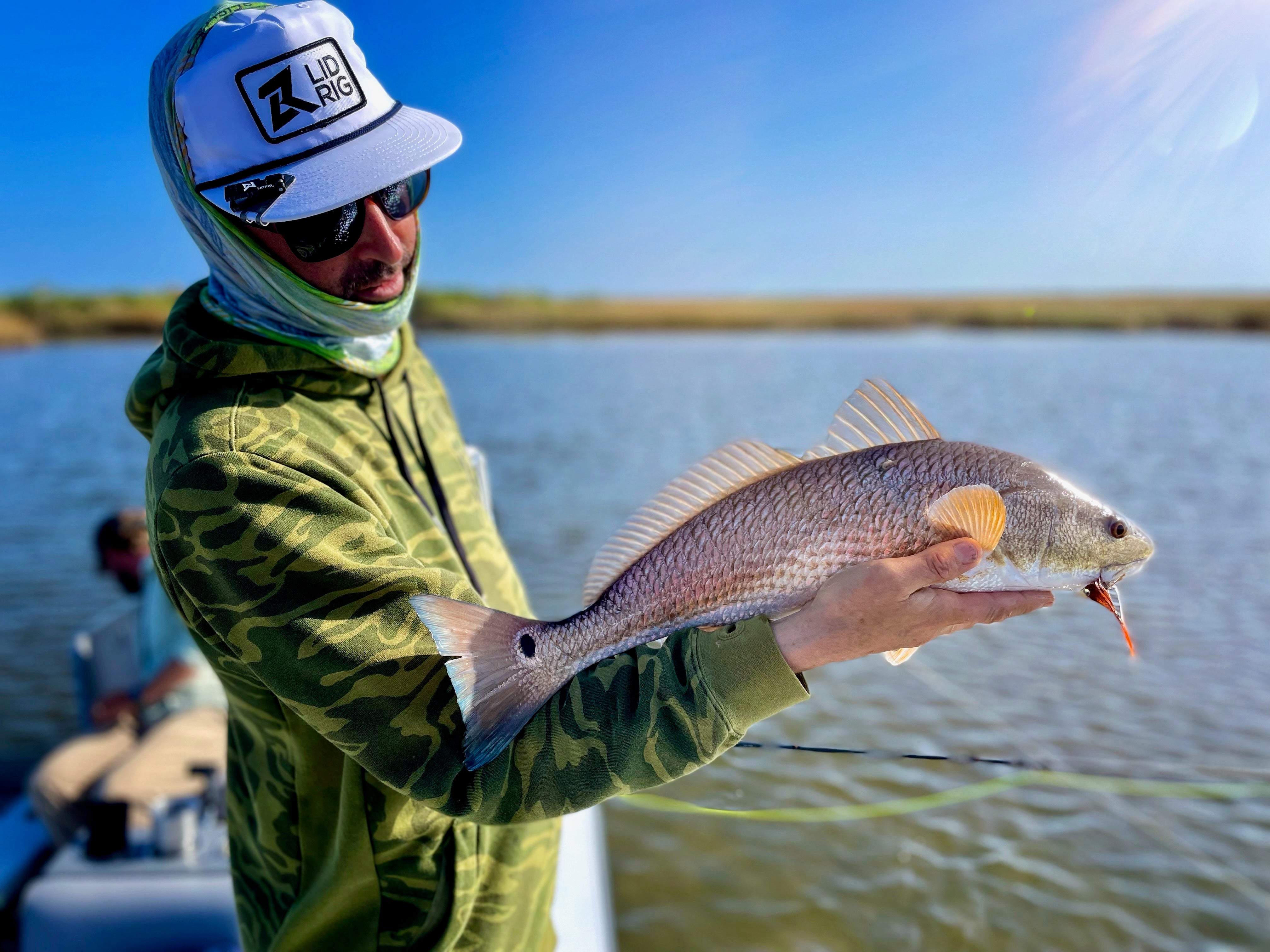Fly fishing is a fun and rewarding activity that can be enjoyed by people of all ages and skill levels. However, for beginners, it can be a bit overwhelming to know where to start. That's why I've put together this list of 25 tips for fly fishing beginners to help you get started on the right foot.
First and foremost, it's important to understand the basics of fly fishing. This includes learning about the equipment you'll need, the different types of flies, and the various techniques for casting and retrieving. Once you have a solid foundation, you can move on to more advanced topics like reading the water and understanding fish behavior. Take your time and enjoy the process.
Selecting the right gear is also crucial for success in fly fishing. From rods and reels to lines and leaders, there are many different options available, each with its own set of pros and cons. By doing your research and consulting with experts, you can find the gear that's best suited to your needs and budget.
Understanding the Basics of Fly Fishing
As a beginner, it is important to understand the basic principles of fly fishing. Here are some key concepts to keep in mind:
Equipment
The equipment needed for fly fishing is relatively simple. You will need a fly rod, reel, line, leader, tippet, and flies. The weight of the equipment will depend on the type of fish you are targeting and the size of the water you are fishing in.
Casting
Casting is the most important skill in fly fishing. It is important to practice casting before you go out on the water. Remember, accuracy is more important than distance. There are different types of casts, including the overhead cast, roll cast, and sidearm cast.
Reading the Water
Reading the water is an important skill in fly fishing. You need to understand where fish are likely to be found in the water. Look for areas with structure, such as rocks or logs, where fish can hide. Also, pay attention to the current and the depth of the water.
Fly Selection
Choosing the right fly is important in fly fishing. You need to match the hatch, which means using a fly that looks like the insects that are currently hatching in the water. You can also use attractor patterns, which are flies that do not imitate any specific insect but still attract fish.
Ethics
Ethics are an important part of fly fishing. Practice catch and release whenever possible, and be mindful of other fishermen in the area. Also, be aware of local regulations and respect the environment and wildlife.
Selecting the Right Gear
When it comes to fly fishing, selecting the right gear is crucial for a successful and enjoyable experience. Here are some tips to consider when choosing your fly fishing gear.
Choosing Your Fly Rod
The fly rod is the most important piece of gear for any fly fisherman. When selecting a fly rod, you should consider the following:
- Length: The length of the rod will depend on the type of fishing you plan to do. Longer rods are better for larger bodies of water, while shorter rods are better for smaller streams and creeks.
- Weight: The weight of the rod will depend on the type of fish you plan to catch. Lighter weight rods are better for smaller fish, while heavier weight rods are better for larger fish.
- Action: The action of the rod will determine how it flexes when casting. Faster action rods are better for longer casts, while slower action rods are better for shorter casts.
Fly Reel Selection
The fly reel is another important piece of gear for any fly fisherman. When selecting a fly reel, you should consider the following:
- Compatibility: Make sure the reel is compatible with your rod and line.
- Drag System: The drag system is what helps you control the fish. Look for a reel with a good drag system that will allow you to easily control the fish.
- Material: The material of the reel will determine its durability. Look for a reel made from high-quality materials that will last for years.
Picking the Perfect Fly Line
The fly line is what carries the fly to the fish. When selecting a fly line, you should consider the following:
- Weight: The weight of the line will depend on the weight of the rod. Make sure you select a line that is the same weight as your rod.
- Type: There are different types of fly lines for different types of fishing. Make sure you select the right type of line for the type of fishing you plan to do.
- Taper: The taper of the line will determine how it casts. Look for a line with a good taper that will allow you to easily cast your fly.
By considering these tips, you'll be able to select the right gear for your needs and have a successful and enjoyable fly fishing experience.
Essential Knots and How to Tie Them
As a beginner in fly fishing, it's essential to learn how to tie the right knots. Knowing the right knots will help you secure your fly to the leader, attach the leader to the fly line, and connect your backing to the fly line. Below are some essential knots and how to tie them.
The Clinch Knot
The Clinch Knot is one of the most common knots used in fly fishing. It is used to tie the fly to the leader. Here's how to tie the Clinch Knot:
- Thread the end of the leader through the eye of the hook.
- Take the tag end of the leader and make 5-7 wraps around the standing line.
- Insert the tag end through the loop near the eye of the hook.
- Wet the knot and pull the tag end to tighten it.
- Trim the tag end.
The Surgeon's Knot
The Surgeon's Knot is used to join two pieces of leader material together. Here's how to tie the Surgeon's Knot:
- Overlap the two pieces of leader material.
- Take one of the pieces and make a loop.
- Take the tag end of the other piece and pass it through the loop.
- Wrap the tag end around the standing line and the loop.
- Pass the tag end through the loop again.
- Wet the knot and pull the standing line and tag end to tighten it.
- Trim the tag end.
The Nail Knot
The Nail Knot is used to attach the leader to the fly line. Here's how to tie the Nail Knot:
- Hold the end of the fly line and the leader together.
- Take a nail or a tube and place it against the end of the fly line.
- Wrap the leader material around the nail and the fly line, working from the end of the line towards the nail, for about 6-8 turns.
- Hold the wraps in place and remove the nail or tube.
- Insert the tag end of the leader through the loop formed by the wraps.
- Wet the knot and pull the standing line and tag end to tighten it.
- Trim the tag end.
By mastering these essential knots, you'll be well on your way to becoming a successful fly fisherman.
Fly Selection Strategies
When it comes to fly fishing, selecting the right fly is crucial to your success. Here are some strategies to help you choose the right fly for the job.
Dry Flies
Dry flies are designed to float on the surface of the water and imitate insects that have landed on the surface. They are a great choice for fishing in slow-moving water or when fish are actively feeding on the surface.
When selecting a dry fly, pay attention to the size, color, and shape of the fly. Look for flies that closely match the insects that are present in the water. For example, if you see a lot of mayflies, choose a mayfly imitation.
Here is a video to help you understand how to place your dry fly on the water for success.
Nymphs
Nymphs are designed to imitate insects that are in the larval stage and are living underwater. They are a great choice for fishing in fast-moving water or when fish are feeding below the surface.
When selecting a nymph, pay attention to the size, color, and weight of the fly. Look for flies that closely match the insects that are present in the water. For example, if you see a lot of stoneflies, choose a stonefly imitation.
Here is another article that will help with selecting flies.
Streamers
Streamers are designed to imitate small fish or other prey that larger fish feed on. They are a great choice for fishing in deep water or when fish are not actively feeding on the surface.
When selecting a streamer, pay attention to the size, color, and movement of the fly. Look for flies that closely match the prey that larger fish are feeding on. For example, if you see a lot of small minnows in the water, choose a minnow imitation.
Remember, selecting the right fly is only part of the equation. You also need to present the fly in a way that looks natural to the fish. With practice and patience, you'll be able to master the art of fly selection and catch more fish on the water.
Casting Techniques
As a beginner in fly fishing, mastering casting techniques is crucial to your success. Here are three common casting techniques that you should learn:
The Overhead Cast
The overhead cast is the most common casting technique used in fly fishing. To perform this technique, I recommend the following steps:
- Start with the rod tip close to the water and the line straight out behind you.
- With a smooth motion, bring the rod tip up and back, loading the rod.
- Once the line is fully extended behind you, move the rod forward with speed. This motion will send the line shooting forward.
- Aim to lay the line down gently on the water, presenting the fly naturally to the fish.
The Roll Cast
The roll cast is a useful technique when there isn't enough room to perform an overhead cast. To perform this technique, follow these steps:
- Start with the line straight out in front of you and the rod tip close to the water.
- With a smooth motion, lift the rod tip and sweep it back, loading the rod.
- Once the line is fully extended behind you, move the rod forward with speed, making a circular motion with the rod tip.
- The line should roll out in front of you, presenting the fly to the fish.
The Sidearm Cast
The sidearm cast is useful when you need to cast under low-hanging branches or other obstacles. To perform this technique, follow these steps:
- Start with the rod tip close to the water and the line straight out behind you.
- With a smooth motion, bring the rod tip up and to the side, loading the rod.
- Once the line is fully extended to the side of you, move the rod forward with speed. This motion will send the line shooting forward.
- Aim to lay the line down gently on the water, presenting the fly naturally to the fish.
By learning these three casting techniques, you'll be well on your way to becoming a successful fly fisherman. Remember to practice regularly and be patient with yourself as you learn.
Reading Water and Understanding Fish Behavior
As a beginner fly fisherman, one of the most important skills to develop is the ability to read water and understand fish behavior. Knowing where to cast your line and what type of fly to use can make all the difference in your success on the water. Here are some tips to help you get started:
Observe the Water
Before you even cast your line, take some time to observe the water. Look for changes in the current, depth, and temperature. These changes can indicate where fish are likely to be feeding. For example, fish may be more active in shallow, riffled water in the morning and evening, while deeper, slower water may be more productive during the heat of the day.
Look for Structure
Fish are often found near structure, such as rocks, logs, and weed beds. These areas provide cover and protection from predators and can also create eddies and current breaks that attract fish. Look for areas where the current slows down or changes direction, as these can be prime feeding areas.
Pay Attention to Insects
Insects are a major food source for many fish species, so paying attention to what insects are present can help you choose the right fly. Look for hatches of mayflies, caddisflies, and other insects, and try to match your fly to the size and color of the natural insect.
Be Patient
Remember, fishing is a game of patience. Don't expect to catch a fish on every cast. Take your time, observe the water, and be willing to experiment with different flies and techniques. With practice and persistence, you'll develop the skills you need to become a successful fly fisherman.
Mastering the Art of Stealth and Approach
As a beginner fly fisher, one of the most important skills to master is the art of stealth and approach. This involves being able to approach the water and fish without spooking them, as well as being able to present your fly in a way that looks natural and enticing to the fish.
Study the Water and Observe the Fish
Before you even begin to fish, take some time to study the water and observe the fish. Look for signs of feeding fish, such as rising fish, subtle disturbances on the surface, or even the flash of a trout's tail. These can all be indicators of where the fish are and can help you plan your approach.
Move Slowly and Quietly
When approaching the water, move slowly and quietly. Avoid making sudden movements or loud noises that could scare the fish. If you're fishing in a river, try to move upstream so that your movements don't disturb the fish downstream.
Use the Right Fly and Presentation
Once you're in position, it's important to use the right fly and presentation. Choose a fly that matches the hatch and looks natural to the fish. Then, present your fly in a way that mimics the natural movement of the insects the fish are feeding on. This might involve a drag-free drift, a twitch, or a strip retrieve, depending on the situation.
Be Patient and Persistent
Finally, remember that fly fishing is a game of patience and persistence. Don't get discouraged if you don't catch fish right away. Keep practicing your stealth and approach, and try different flies and presentations until you find what works. With time and practice, you'll become a master of the art of fly fishing.
Practicing Proper Catch and Release
As a fly fishing beginner, it is essential to learn and practice proper catch and release techniques. This is not only important for the sustainability of fish populations but also for the ethical treatment of the fish.
Here are some tips for proper catch and release:
-
Use barbless hooks: Barbless hooks are easier to remove from the fish's mouth, causing less damage to the fish. This also makes it easier to release the fish back into the water quickly.
-
Keep the fish in the water: When removing the hook, keep the fish in the water as much as possible. This helps the fish to breathe and reduces stress. If you need to remove the fish from the water, make sure to do it quickly and gently.
-
Use a landing net: A landing net can help you handle the fish without causing harm. Make sure the net is wet before using it to avoid removing the fish's protective slime layer.
-
Revive the fish: Before releasing the fish, hold it gently in the water facing upstream. This allows water to flow over the fish's gills, helping it to breathe and recover.
-
Be mindful of the fish's condition: If the fish appears exhausted or injured, do not release it back into the water. Instead, consider keeping it for food or contacting a local fishery for proper disposal.
By following these tips, you can ensure that you are practicing proper catch and release techniques and contributing to the sustainability of fish populations.
Dealing with Common Challenges
As a beginner, you may encounter several challenges while fly fishing. Here are some tips to help you overcome them.
Wind Management
Wind can make casting difficult and affect the presentation of your fly. To manage wind, try casting at a lower angle and use a sidearm cast. You can also use heavier flies or switch to a heavier line to help cut through the wind. Additionally, try to position yourself with the wind at your back or side to make casting easier.
Dealing with Tangles
Tangles can be frustrating, but they are a common occurrence in fly fishing. To prevent tangles, make sure your line is straight before casting. You can also use a tangle-resistant leader and avoid false casting too much. If you do get a tangle, take your time to carefully untangle it to avoid making it worse.
Changing Flies Efficiently
Changing flies can be time-consuming, but it's important to use the right fly for the conditions. To change flies efficiently, keep your flies organized and easily accessible. You can use a fly box or attach them to a foam patch on your vest or pack. Additionally, practice tying knots quickly and efficiently to save time.
Remember, challenges are a natural part of learning to fly fish. Don't get discouraged, keep practicing, and soon you will be able to overcome any challenge that comes your way. Practicing your knots is likely the best practice you can have.
Planning Your Fly Fishing Trip
When planning a fly fishing trip, there are a few things to consider to ensure a successful and enjoyable experience. In this section, I will cover the important aspects to keep in mind when planning your fly fishing trip.
Researching Locations
The first step in planning your fly fishing trip is to research potential locations. Look for areas that are known for good fishing, and consider factors such as accessibility, fishing regulations, and the types of fish that can be caught. Online forums and fishing websites can be great resources for finding information on specific locations.
Understanding Weather Patterns
Weather can have a big impact on your fly fishing trip, so it's important to understand weather patterns in the area you plan to fish. Check the forecast leading up to your trip, and be prepared for changes in weather conditions. It's also a good idea to research how weather patterns can affect fish behavior, as this can help you plan your fishing strategy.
Safety Precautions
When planning your fly fishing trip, it's important to prioritize safety. This includes wearing appropriate clothing and gear, staying aware of your surroundings, and following fishing regulations and guidelines. It's also a good idea to let someone know where you'll be fishing and when you plan to return, in case of an emergency.
By researching locations, understanding weather patterns, and prioritizing safety, you can ensure a successful and enjoyable fly fishing trip.
Frequently Asked Questions
What essential gear do beginners need to start fly fishing?
As a beginner in fly fishing, there are a few essential pieces of gear that you will need to get started. These include a fly rod, a fly reel, fly line, leader and tippet, and flies. When selecting these items, it's important to consider the type of fishing you'll be doing and the species you'll be targeting.
How do you properly cast a fly fishing rod?
Casting a fly fishing rod can be challenging for beginners. However, with practice, you can master the technique. The key is to use a smooth, fluid motion when casting. Start by holding the rod with both hands, and then slowly raise the rod to the 10 o'clock position. Next, smoothly and quickly bring the rod back to the 2 o'clock position, and then forward to the 10 o'clock position again. As you do this, release the line from your non-dominant hand, allowing the line to extend fully. Practice this motion until you can cast the line out onto the water with ease.
What are effective fly fishing techniques for trout in lakes?
When fly fishing for trout in lakes, it's important to use the right techniques to increase your chances of success. One effective technique is to use a sinking line to get your fly down to the depth where the trout are feeding. Another technique is to use a slow, steady retrieve to mimic the movement of natural prey. Additionally, it's important to use the right flies for the type of trout you're targeting and the conditions you're fishing in.
What types of bait are recommended for those new to fly fishing?
Fly fishing uses artificial flies as bait, rather than live bait. There are many types of flies available, each designed to mimic a specific type of prey. As a beginner, it's best to start with a few basic patterns, such as woolly buggers, nymphs, and dry flies. These patterns are versatile and effective for many types of fish.
How can beginners find the best locations for trout fly fishing?
Trout can be found in a variety of locations, including rivers, streams, and lakes. As a beginner, it's important to do your research to find the best locations for fly fishing in your area. Look for areas with good water quality, plenty of food for the fish, and easy access for fishing.
What are some common mistakes to avoid as a beginner in fly fishing?
As a beginner in fly fishing, it's easy to make mistakes that can hinder your success on the water. One common mistake is using too much force when casting, which can result in tangles and lost flies. Another mistake is not paying attention to the water and the fish, which can cause you to miss bites. Finally, it's important to be patient and persistent, as fly fishing can take time to master.
This is a basic review and simple introduction to a ton of things in fly fishing. If you really want to learn, then go give it a try and perhaps start with a guide. That kicks you off on the right foot and give you a great advantage to learning when you dive in.

By Christian Bacasa
Host of the Fly Fishing Insider Podcast
www.ffipodcast.com
@flyfishinginsiderpodcast
@dupeafish
Watch on YouTube


